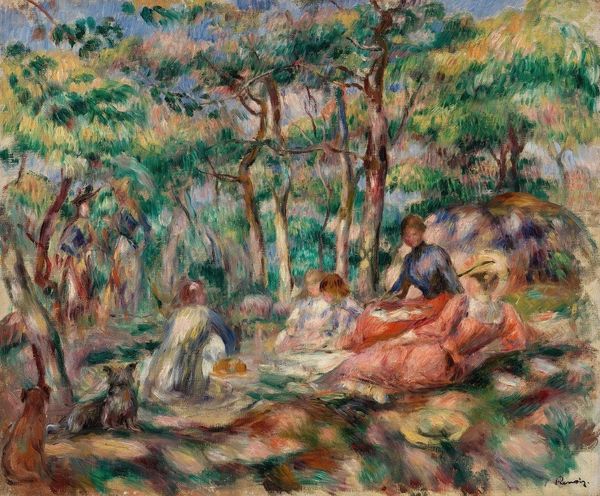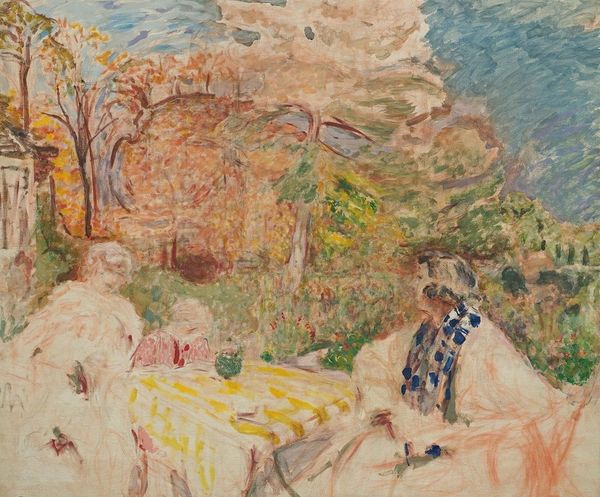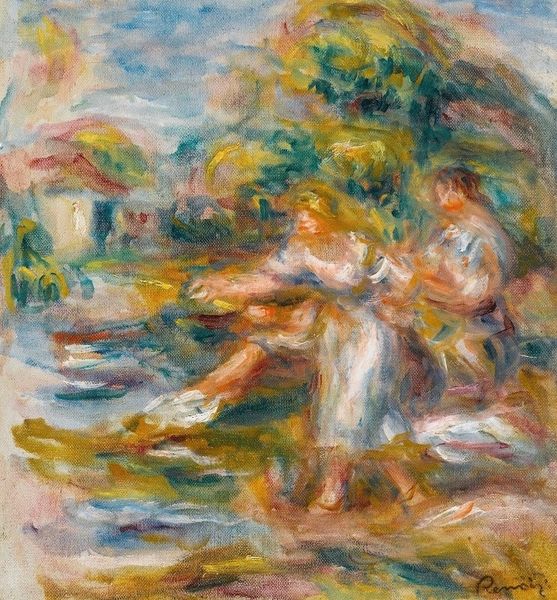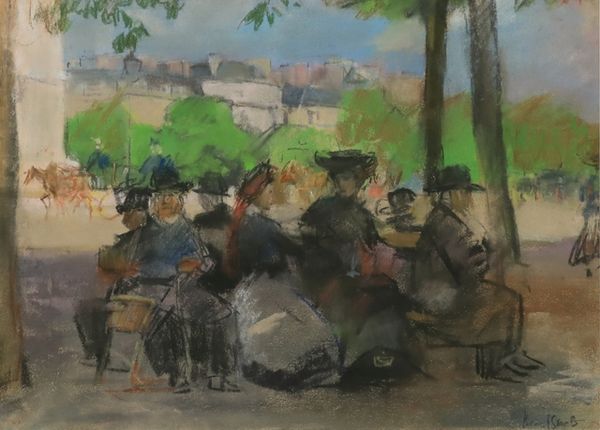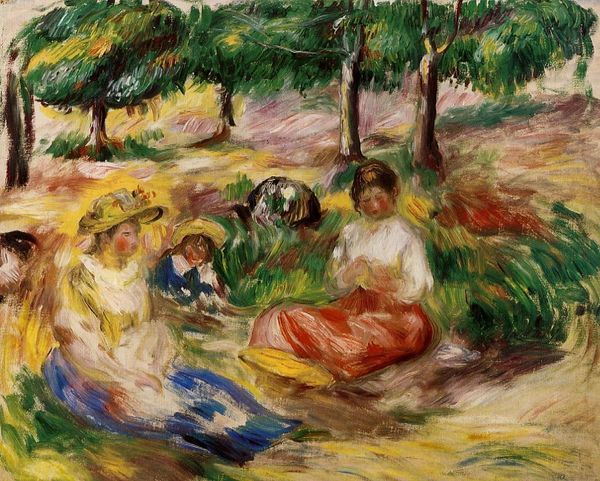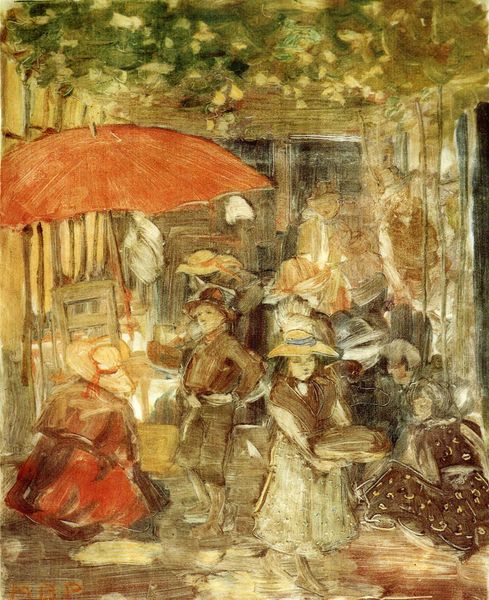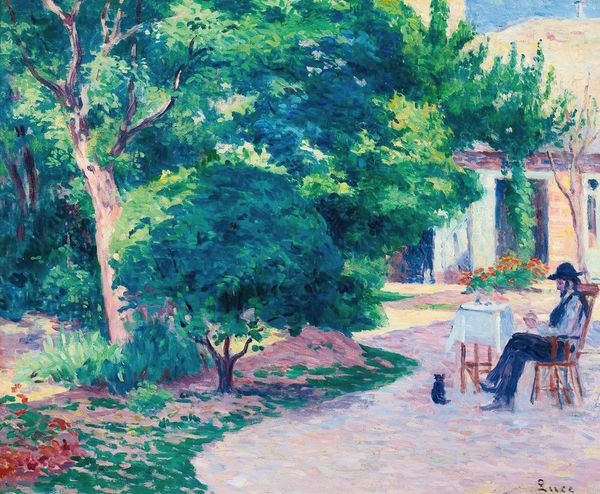
Copyright: Public Domain: Artvee
Editor: William Glackens' "Beach with Figures, Bellport," made around 1915 using oil paint, offers a breezy, sun-drenched scene. I’m struck by the texture and how the visible brushstrokes create a sense of movement, as if capturing a fleeting moment. What are your thoughts on this piece? Curator: From a materialist perspective, the very act of painting en plein air, as Glackens appears to have done, reveals a lot about artistic production at the time. Consider the accessibility of paints and portable easels. It reflects a growing market for leisure and a new way of observing the everyday lives of people. How do you think these readily available materials influenced the subject matter that artists chose? Editor: That’s interesting. I hadn’t thought about the material conditions allowing artists to depict these leisure scenes so readily. The painting does portray a scene of middle-class leisure. Do the figures’ clothing or the way they're grouped tell us more about their social class or gender roles? Curator: Absolutely. Look at the way clothing denotes status and perhaps constrains movement. Observe the parasols. They speak to a certain class afforded protection from the sun and the ability to engage in outdoor leisure. Their production relies on specific materials and labor practices. Were parasols and similar articles available to all? Editor: Probably not, implying some form of social hierarchy at play here, even within a relaxed scene. Thanks, that definitely made me consider this painting with new eyes, especially how materials shaped its content and context. Curator: Indeed. Reflecting on the relationship between artistic production, consumption, and social context enriches our understanding of these seemingly simple, picturesque scenes.
Comments
No comments
Be the first to comment and join the conversation on the ultimate creative platform.

